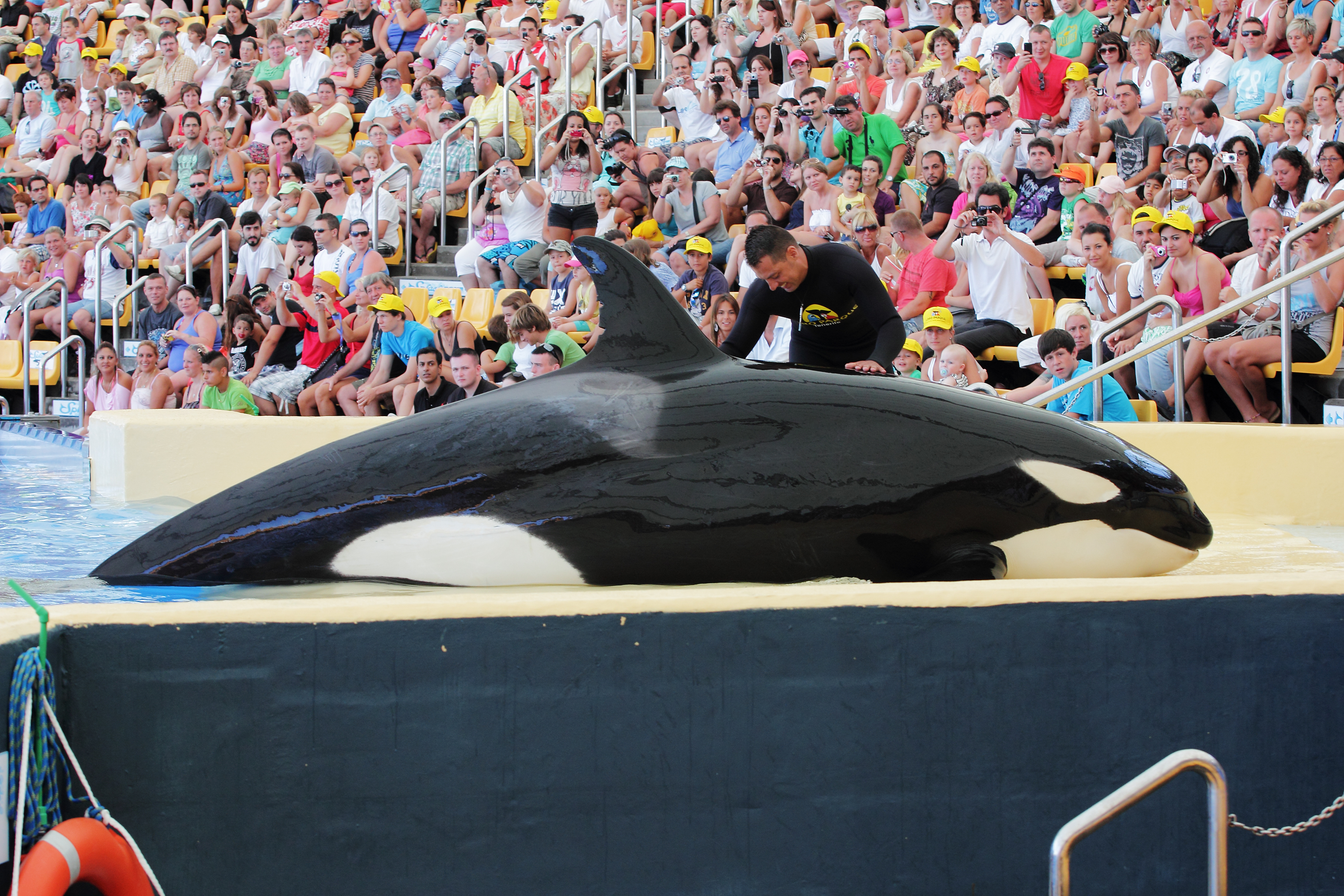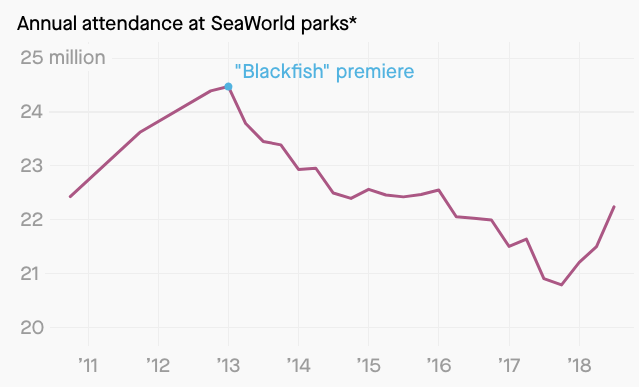
SeaWorld has left a bitter taste in everyone’s mouth since 2013 when Blackfish, a documentary focused on the facility’s treatment of sea animals.
What is SeaWorld?
For those who are blissfully unaware, SeaWorld is a theme park known for its marine mammals; dolphins, orcas and sea lions. While they feature roller coasters and water-themed rides, their marine mammals are their main attraction. The first location opened in 1964 in San Diego followed by SeaWorld Ohio (1970-2000), SeaWorld Orlando (1973) and SeaWorld San Antonio (1988). All except the Ohio branch are still running to date.
What’s the problem?
SeaWorld started to attract public attention when it first introduced its killer whale show in 1965. SeaWorld houses its orcas in tanks that hold 5.8 million gallons of water. This is relatively equivalent to less than nine olympic-sized swimming pools. While this may sound massive, they aren’t even close to being enough for this gigantic marine animals. If one were to compare the tanks, they would be comparable to humans spending the rest of their lives in a bathtub. Each of these tanks are known as Shamu tanks.
SeaWorld and orcas came into light when Shamu, the first orca to be displayed in SeaWorld, injured a female-model who was trying to ride her while wearing a bikini for an ad. Some argue that aggressive behaviour is natural in orcas, while others claim that their aggressive behaviour is the direct cause of being trapped and tortured.
In August of 1989 an orca by the name of Kandu V tried to sweep up another orca, Corky II, using her bare teeth. Kandu V ended up smashing her head into a wall causing her to break her jaw, severing an artery which ultimately led to her death. Another instance, this time involving a human death happened November 2006 where Kasatka dragged a trainer, Ken Peters, to the bottom of the tank after hearing her calf crying for her at the back of the pool. More recently, in February 2010, an experienced female trainer, Dawn Brancheau, was killed at SeaWorld Orlando by Tilikum shortly after performing for a Shamu show. Before Dawn, Tilikum had been associated with two other deaths.
Many of these deaths where covered up or only reported to the public once a human life was involved. To this date it is unknown exactly how many orcas were killed in transportation, training or at the facility. For reference, at least 49 orcas have died at the hands of SeaWorld. To put that in perspective, there are only 76 wild orcas that remain today.

Who was the first orca to be captured by Seaworld?
Shamu was captured in 1965, she was the fourth orca ever captured and the second female. She was soon after sold to SeaWorld becoming the first ever orca to be put on display and the first to be intentionally captured. Shumu only lived about 6 years after her capture, dying in August of 1971 at 9 years old. In the wild, she could have lived to be 90. After her death Seaworld branded Shamu’s name and continued to use it for many orcas after. Children and guests alike were blissfully unaware that the original Shamu had passed away many years ago.
What is the orca population at the moment?
Today, in Canada and the United States, orcas are an endangered species. However threats to their survival continue to rise. Up until May 2019, the population had not had a successful birth since 2016. And since then 13 other orcas had been declared missing and presumed dead. Today the count of wild orcas is only at 76. These numbers have drastically decreased since the 1960s after which these animals have been hunted and forced to put on shows for human entertainment. For quite some time, It was unknown to the public that orcas were captured using bombs. Mere babies; they were separated from their families while their mothers were killed which significantly dropped the population.
Did the film BlackFish impact SeaWorld?

Since the 1960s, 166 known orcas have been taken into captivity and out of this number, 37 remain. Today SeaWorld currently holds 20 orcas in three of its parks—this is more than any other marine park in the world.
The growing uneasiness of orca captivity increased ten folds after the renowned documentary BlackFish was released in 2013. BlackFish documented the treatment of orcas at SeaWorld.It more specifically followed the story of Tilikum, a killer whale that has been involved in the death of three people. Following the films release there was an immediate outcry from the public. The Barenaked Ladies, Trisha Yearwood, Heart, and Willie Nelson all canceled their scheduled concerts at the amusement park.
SeaWorld took a major hit financially, in November 2014 SeaWorld confirmed that attendance had dropped 5.2% and profits had fallen 28%. Their stock was down 50% in the same year as well as their net income which took a drastic hit going from $37.4 million USD to $5.8 million USD.
To this day SeaWorld disputes the accuracy of the film calling it “propaganda” and “emotionally manipulative”. In fact, it spent $15 million USD to rectify the damages that Blackfish did to its reputation by emphasizing its contributions to the study and conservation of whales.
Many petitions from activist groups such as PETA (and lawsuits) and the negative public opinion of their facilities were finally enough to convince SeaWorld of their devastating effect of orcas. On March 17, 2016, SeaWorld announced an end to their breeding program, meaning that the orcas currently in their care will be the last in captivity in their care. In 2017 San Diego ended its theatrical orca shows and they have ended them in Orlando and San Antonia as of this year.
But has the “Blackfish effect” stopped in the last couple of years?
In the year 2018, numbers saw that SeaWorld was making a come back. In 2018, attendance was up 4.8% compared to the previous year. SeaWorld also reported a net income of $22.5 million in comparison to a net loss of $175.9 million. Though SeaWorld has actively stopped breeding orcas, they will still have them in captivity for many years to come, and they are vigorously advertising them.
Though it may seem as though we are working towards progress. The number of marine mammals in captivity continue to rise in the East, more specifically in Asia. The only way to stop marine animal captivity is to stop supporting facilities that promote entertainment at the animals expense.We can help organizations that put pressure of such facilities to stop their inhuman ways by signing petitions and/or donating to their cause.

